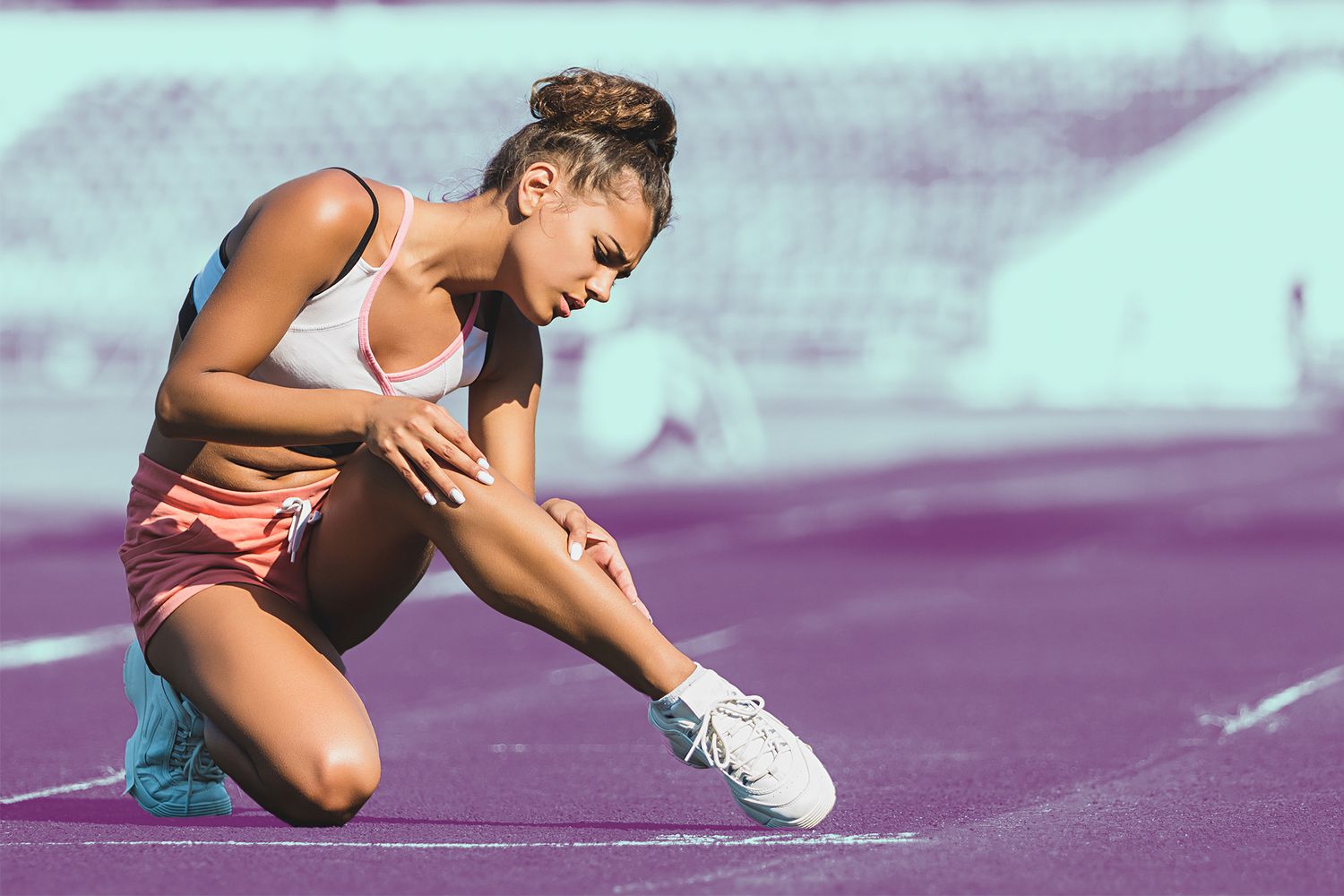
When you head out for your first fast-paced run in ages, you might expect to experience a few not-so-pleasant physical side effects: Beads of sweat falling into your eyes, quivering leg muscles, or maybe even a feeling that you can’t catch your breath. One that’s probably not on the list? Seriously itchy legs.
This phenomenon is known as runner's itch, and it's actually pretty common. Here, a physical therapist breaks down why you desperately need to scratch mid-run, plus the steps you can take to treat and prevent runner's itch.
Runner's Itch Causes
Despite the name, runner’s itch doesn’t only occur while you’re running — any type of vigorous exercise can trigger the reaction, says Rena Eleázar, P.T., D.P.T., C.S.C.S., a board-certified specialist in sports physical therapy and the co-founder of Match Fit Performance in New York City. During these activities, your working musclesrequire more oxygen, so your body dilates your blood vessels in order to increase blood flow to them, research shows. This expansion causes your capillaries and arteries to also swell, and as a result, they may stimulate certain nerve endings in your body, which can cause the sensation known as runner’s itch, says Eleázar.
The release of histamine may also play a role in runner’s itch. Though the biochemical is typically released into the bloodstream in response to allergens, research suggests it may be released during aerobic exercise, too, says Eleázar. “When you’re exercising, you turn on your sympathetic nervous system, and so sometimes histamine will get released to prevent fatigue,” she explains. This histamine also triggers the expansion of blood vessels, according to a study published in Exercise and Sport Sciences Reviews, which is why you may feel itchy AF after a round of sprints, says Eleázar.
Compounding the problem are skin sensitivities, says Eleázar. Allergies to detergents and irritation caused by sweat droplets on the skin or sweat-soaked clothes can all make you feel itchy and, if you’re already dealing with runner’s itch, can worsen your symptoms, she explains.
Runner's Itch Symptoms
Runner's itch most commonly develops on the lower torso and legs — an area to which blood rushes when you're sprinting — though it can occur anywhere on the body, says Eleázar. Along with itchiness, you may also develop redness or a feeling of warmth in the affected areas, but these symptoms will gradually go away once your blood flow returns to a resting level, she adds. And currently, there aren't any known long-term health risks associated with runner's itch, she adds.
Who Is at Risk for Developing Runner's Itch
If you try a treadmill sprint workout or take part in a HIIT class, you’re not destined to develop runner’s itch, says Eleázar. “It doesn’t happen to everybody,” she adds. If your fitness routine has been put on the backburner, though, you have a higher risk. “It’s typically seen when someone has been more sedentary,” says Eleázar. “Your body is not used to this rush of blood flow and has never felt the need to expand the capillaries and get as much blood into the muscles as with something as vigorous as running. It’s almost like a shock response to your body.” People who pick up running and go out for their very first jog, for example, might experience that must-scratch feeling, and the same goes for folks who took a long break from running then go “too hard, too soon” when they first come back to it, she says.
How to Treat Runner's Itch
If an intense itchy feeling is distracting you from your run, your best bet to ease the reaction is by lowering the intensity of your workout (think: walking instead of sprinting) or stopping it altogether, says Eleázar. "The cause of the itching is the need to get more blood flow to the area, so if you lower the need to have all this blood flow to your lower limbs and potentially to your arms, typically it will go away," she explains. If you're still feeling the need to scratch, applying an anti-itch cream may also help, she adds.
That said, if your symptoms are lasting longer than a few hours or you're developing runner's itch repeatedly (i.e. after every workout), you're best off speaking with a healthcare provider to get to the root of your itchiness and obtainproper treatment, says Eleázar.
How to Prevent Runner's Itch
The first step to keeping runner's itch at bay? Wear moisture-wicking clothes washed with a gentle detergent and keep your skin dry to prevent potential irritation. Then, stick with an exercise plan that allows you to be consistent and gradually progress your workouts, says Eleázar. (Working with a running coach to devise this plan can be particularly helpful, she adds.) "If you're basically going zero to 100 and your body is reacting this way, that's just a sign it's a little bit too intense, it's a little bit too much for you at that period of time," she says. Consider breaking up your runs with walks, running for shorter periods of time, or overall lowering your session's intensity so your body can become acclimated to the rush of blood and not fatigue as quickly, she explains. (
How to Start Running for Beginners
"Just like everything else, if you go from one extreme to the other, it's not good for your body," says Eleázar. "So trying to expose it to a certain amount of stress but giving it time to recover is the best way to get through it."














































